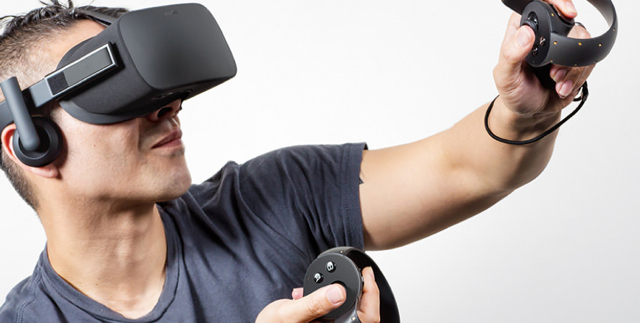ABI Research projects that 43 million virtual reality devices will ship by 2020. Compare that to the 1.5 million Google Cardboards expected to ship by the end of 2015. That virtual reality and augmented reality is growing is no surprise, given the involvement of major industry players including Google, Samsung, Microsoft and Facebook. But perhaps nothing paints a better picture of VR’s growing clout than a look at the number of devices predicted to ship, from Oculus Rift’s head-mounted display to Google Cardboard’s inexpensive glasses.
According to ABI Research, which just issued its “Augmented Reality, Virtual Reality, and Gaming Technologies Market Research” report, “Virtual reality devices as a whole are expected to grow rapidly over the next five years, with an average CAGR of 106 percent and combined shipments of 43 million in 2020.”
“Sales of VR head-mounted displays, including mobile-based devices like the Samsung Gear VR and Google Cardboard, as well as tethered devices like the Oculus Rift and Sony’s Project Morpheus, will be driven by the release of high-profile devices and a growing awareness and interest in the technology from consumers,” says research analyst Eric Abbruzzese.
ABI adds that augmented reality smartglasses will experience similarly dramatic growth, shipping 21 million units in 2020 with a CAGR of 78 percent. Microsoft’s HoloLens is expected to be a major driver of consumer AR devices.
Among VR devices, Google Cardboard “will continue to be the first choice for an inexpensive VR experience” and is estimated to ship around 1.5 million units by the end of 2015. Also driving mobile-reliant device growth is Samsung’s Gear VR.
Among tethered devices, the Oculus Rift, HTC Vive and Sony’s Project Morpheus will be dominant and drive early growth. ABI predicts that tethered VR devices will enjoy the highest growth, at 128 percent CAGR 2014 to 2020, but that mobile VR devices will ship more total units at 25 million in 2020.
“VR will as a whole be entertainment focused, with video and gaming at the forefront,” notes Abbruzzese. “AR will be driven by more enterprise uses, with focuses in efficiency and safety in industrial, automotive, and logistics environments.”


No Comments Yet
You can be the first to comment!
Sorry, comments for this entry are closed at this time.